43rd President of the United States (2001-2009)
In the morning hours of 11 September 2001, American Airlines flight 11 from Boston to Los Angeles had crashed between the 93rd and 99th floors of the North Tower of the World Trade Centre in New York, the United States (US). About 15 minutes later, at 09:03 AM (Eastern Day Time), the United Airlines Flight 175, also headed from Boston to Los Angeles, had struck between the 77th and 85th floors of the South Tower of the World Trade Centre. The event was not a scene from a fictional movie of Hollywood but the first segment of the deadliest terrorist attack in the US history. The second segment of the coordinated attack was on the Pentagon and, in some assumptions, the White House—but the attack was partially foiled by the courageous passengers of the United 93 flight. On the day of the attack, no one had imagined that the event of 9/11 would bring a significant shift in understanding and dealing with the phenomenon of terrorism. After 20 years of bloody ‘War on Terror’ and a mission to hunt down the perpetrators of the 9/11 attack, the world witnessed the US withdrawal from Afghanistan, leaving the war-torn country in a muddled situation.
This article delves into the terrorist attacks of 11 September 2001 and how they significantly impacted a war against terrorism, highlighting major US military and intelligence operations. The article also discusses the Global War on Terror (GWOT), its repercussions, and the emergence of new terror groups.
The Events of 9/11
The 11th of September 2021 marked the 20th anniversary of four terrorist attacks coordinated by al-Qa’ida against the US. The 9/11 terrorist attack targeted not only the physical buildings or the civilians, but it had targeted the pillars of the foundation of the US—economy, defence, and political establishment. With ‘Zero Survivors’ from all four flights, in total, 2,977 people (including passengers, crew, people at World Trade Centres, and Pentagon) lost their lives, and more than 6,000 were injured.2
In the early morning of 11 September 2001, 19 terrorists of al-Qa’ida aboard and hijacked four commercial jets— the American Airlines (Flight 11 and Flight 77) and the United Airlines (Flight 175 and Flight 93). Out of these 19 terrorists, —15 were Saudis, two were UAE (United Arab Emirates) nationals, an Egyptian, and a Lebanese. All the hijackers were between 20-35 years of age. As per the plan, the hijacked aircraft were flown and crashed into their specific targets. The lead-hijacker of the American Airlines flight 11—Mohammad Atta (an Egyptian), crashed the plane into the World Trade Centre One (North Tower) at 08:46 AM (EDT).3
At the time of the first crash, then-President George W Bush was attending an event at the Emma E Booker Elementary School in Florida. Everyone, including the President, made several assumptions that “it could be bad weather, must be a small plane, or must be an accident”.4 After approximately 19 minutes of the first crash, the hijackers of another flight—the United Airlines Flight 175, deliberately crashed the plane into the World Trade Centre Two (South Tower) at 09:03 AM (EDT).5 The second crash cleared everyone’s assumption that the crashes were an act of terrorism, and the threat was still hovering.

The wave of attacks did not stop with the World Trade Centre, but the threat was heading towards the foundation of the US armed forces—the Pentagon. The third hijacked airline—American Airlines flight 77, which was bound from Washington Dulles International Airport (Dulles) to Los Angeles, was hijacked and deliberately crashed into the Pentagon in Arlington (Virginia) at 09:37 AM (EDT).6 The final aircraft—United Airlines flight 93 was scheduled from Newark International Airport (now Newark Liberty International Airport) to San Francisco International Airport. The plane was hijacked and crashed into a field in Shanksville in Somerset County in Pennsylvania at 10:03 AM (EDT).7 With courage, the 33 unarmed passengers of the United 93 revolted against the armed hijackers and foiled the latter’s plan to hit the specific target. To date, the target of the hijackers of the United 93 remained unclear, but it could have been one of the political symbols of the US—the American Republic, the Capitol building, or the White House.
Global ‘War on Terror’ & Emergence of New Breed of Terror
A week before the 9/11 attacks, Richard Clark—the former National Counterterrorism Coordinator at the US National Security Council (NSC), asked former US National Security Adviser (NSA)—Condoleezza Rice, “Are we serious about dealing with al-Qa’ida threat? Is al-Qa’ida a big deal?”8 Pre-9/11 attacks, most US intelligence and security experts’ focus remained on Iraq and Iran as two non-US allied States with capabilities to sponsor terrorism. However, considering the US's strong economic and military capabilities, these two adversaries had everything to lose from doing something like 9/11. If not Iran or Iraq, who could be the perpetrator of such a notorious act of terrorism against the ‘Superpower’ US? No one, except Michael Morell—former acting Director of the Central Intelligence Agency (CIA), had Osama bin Laden (may also refer to as OBL) and al-Qa’ida in his mind as the main culprits of this attack. Being airborne on 11 September 2001, then-US President George W Bush called upon then-Chief of Staff Andy Card and Michael Morell in his small office on Air Force One and asked, “Michael, who did this?” Gathering his confidence to respond to President’s question, Michael Morell replied, “I believe when we get to the end of the trail, Mr President, we are going to find al-Qa’ida, and we are going to find bin Ladin (Laden).”9
Michael’s brief assessment of al-Qa’ida and OBL was based on the past patterns of al-Qa’ida-led terrorist attacks against the US. The East African Embassy bombings on 07 August 1998, the attack on the USS Cole off the coast of Yemen on 12 October 2000, both attacks were coordinated by al-Qa’ida. 10 However, it was a tough call to admit if al-Qa’ida could coordinate and successfully execute such ‘Kamikaze’ attacks by hijacking the commercial airlines. In an oral interview with the Counter-Terrorism Centre, West Point, the former acting Director of the CIA—Michael Morell, recalled the day of 9/11 and claimed that back in 1996, significant strategic warnings about al-Qa’ida and Osama bin Laden & his ambitions to attack the US, were shared with the Clinton administration and the Bush administration11. However, ironically those warnings failed to deter the 9/11 attacks.
After the 9/11 attacks, a large portion of US’ intelligence, military, and diplomatic resources were engaged in avenge the attack and hunting down the mastermind—Osama bin Laden. Addressing the Congress on 20 September 2001, then-US President George W Bush used the term ‘war on terror’ while referring to the radical network of terrorist groups and every government supporting them as an enemy of the US.12 On 07 October 2001, in response to the 9/11 attacks, the US government declared the ‘Global War on Terror’ (GWOT) under the official name— ‘Operation Enduring Freedom’ (OEF). The US military campaign—GWOT was primarily targeting al-Qa’ida and Taliban—the terrorist group that provided shelter and denied the handing over Osama bin Laden to the US government.
Almost after ten years, on 02 May 2011, the mastermind of the 9/11 attacks—Osama bin Laden was eliminated in Abbottabad in Pakistan, by the US military special operations unit—SEAL Team Six, with support from CIA operatives on the ground.13 On 28 December 2014, then-US President Barack Obama announced the closure of the ‘Operation Enduring Freedom’ in Afghanistan and officially, it was shut down on 31 December 2014. The OEF was replaced by the ‘Operation Freedom’s Sentinel’ (OFS) on 01 January 2015. The OFS was part of the NATO-led Resolute Support Mission—equipped with two components: i) Counter-Terrorism, and ii) working with allies as part of Resolute Support14; in continuation to the US military mission, aided with the rebuilding of Afghanistan.
The Emergence of New Breed of Terror
Post 9/11 event, there has been a shift in the perspective to address the issue of terrorism. The GWOT may have brought 9/11’s perpetrators to justice; however, the US military operations as a part of GWOT in West Asia had created a vacuum for the new breed of terrorist groups to fill that gap. In 2002-2003, some members of the US administration believed that the 9/11 attacks justified a military campaign against Saddam Hussein, who was believed to possess the biological weapons or Weapons of Mass Destruction (WMD), with capabilities to launch bio-terrorism against the US. A possible connection between al-Qa’ida and the Iraqi government-led by Saddam Hussain was often talked about to support the case. However, the SIGINT (Signals Intelligence) neither proved nor disapproved a functional relationship between the government of Iraq and al-Qa’ida. 15
Supporting the information provided by the US’ SIGINT, in 2007, a prewar intelligence report on Iraq was presented to the Armed Services Committee by the Pentagon’s Inspector-General Thomas Gimble. According to the report's findings, there was no concrete evidence to establish any connections between the Iraqi government under Saddam Hussein and al-Qa’ida.16 On 20 March 2003, the military campaign led by the US and allied forces began, and on 13 December 2003, the American forced dragged out and captured Saddam Hussein, who was hiding in a hole in the ground near a farmhouse in ad-Dawr, near Tikrit in Iraq.17
After the fall of Baghdad in 2003, a vacuum emerged in Iraq, and Islamic radical groups, including al-Qa’ida, were ready to fill the gap. During 2003-2008, the coalition forces were engaged in fighting with the insurgent groups in Iraq. As a result of the vacuum, in 2003, Jama’at al-Tawhid wal-Jihad (JTJ) insurgent group carried out attacks on coalition forces and later in October 2004 paid allegiance to al-Qa’ida to form ‘al-Qa’ida in Iraq (AQI)’ under the leadership of Abu Musab al-Zarqawi. Due to differences between Zarqawi and senior al-Qaida leadership, the latter disowned relationships with Zarqawi’s group. The AQI, which was renamed as ‘Islamic State in Iraq (ISI)’ and carried out its operations until the death of Zarqawi in 2006.
The American public opinion was shifting towards the withdrawal of US forces from Iraq. By May 2007, in unofficial polling, 55 per cent of Americans firmly believed that the invasion of Iraq was a mistake, and 51 per cent voted for US troops withdrawal from Iraq.18 In 2007, the US announced the withdrawal of its forces from Iraq, and the process began in December 2007 and continued until December 2011. Post-US withdrawal forces, in 2011, the Islamic State of Iraq (ISI) established a stronghold in Iraq and took advantage of the civil war, followed by insurgency in Syria. In 2013, the Islamic State of Iraq was renamed to ‘Islamic State of Iraq and Syria (ISIS) or Islamic State (IS)’ and emerged as one of the most barbaric terrorist groups in history, intending to establish an Islamic caliphate worldwide. Despite the Islamic State’s degradation and territorial losses in 2016-2017 and the killing of its leader, Abu Bakr al-Baghdadi, the terrorist organisation remains a threat to the United States and its allies.
War on Terror: Mission Accomplished?... Not Yet
On 08 July 2021, US President Joe Biden assessed the current scenario of global terrorism in light of the ‘Drawdown of US Forces in Afghanistan’. President Biden said that “in addition to delivering justice to al-Qa’ida leader Osama bin Laden, the US also achieved its secondary objective— “to degrade the terrorist threat to keep Afghanistan from becoming the base from where the attacks against the US continued.”19According to the former acting Director of the CIA—Michael Morell, the United States must monitor the terrorist groups and the threat. “You keep eyes on them [terrorist groups], they remain degraded…...You take eyes off them; they rebuild”, said Morell in an interview.20
In the past 20 years of the global war on terrorism, the US successfully managed the challenges posed by the terrorist groups. However, terrorism has spread and metastasised around the globe in the form of al-Shabaab in Somalia, Boko Haram in Nigeria, al-Qa’ida Central & in Arab Peninsula (AQAP), and Islamic State (IS/ISIS), which continues to pose threats of attacks against the respective government regimes and establishment of the caliphate. Although al-Qa’ida and Islamic State have been weakened, the terrorist ideology and propaganda remain active through their affiliates and so-called branches in Africa, West Asia, and South Asia. With the vital intelligence and counter-terrorism mechanisms already in place, the recent chaotic situation in Afghanistan presents a serious concern to the US interests. Taliban being in power in Afghanistan and through its strong connections, al-Qa’ida will undoubtedly gain much strength.
The US must engage its resources—military, intelligence, and diplomatic, in a balanced approach to deal with terrorism and threats from other nations such as Russia, Iran, China, and North Korea in non-conventional domains such as cyber, healthcare, and trade. Utilising the military and intelligence resources, the US must focus on degrading the re-emergence of al-Qa’ida under the shadows of the Taliban and cease the expansion of the Islamic State (IS) in Afghanistan. Failure to do so, Afghanistan will again become the global hub of terrorism and a stage to launch another 9/11 similar attacks against the US and its allies.
Endnotes
- Bush, W George. “Address to a Joint Session of Congress and the American People”, Office of the Press Secretary-The White House, 20 September 2001, Available from: https://georgewbush-whitehouse.archives.gov/news/releases/2001/09/20010920-8.html. Accessed on 10 September 2021. ; “Bush address #2”, C-SPAN, 20 September 2001, Available from: https://www.c-span.org/video/?c4357360/user-clip-bush-address-2-92001. Accessed on 11September 2021.
- Plumer, Brad. “Nine facts about terrorism in the United States since 9/11”, The Washington Post, 11 September 2013, Available from: https://www.washingtonpost.com/news/wonk/wp/2013/09/11/nine-facts-about-terrorism-in-the-united-states-since-911/ . Accessed on 10 September 2021.
- McAllister P. Therese; et al. (2008), Structural Fire Response and Probable Collapse Sequence of World Trade Centre Building 7 (Volume 1). Federal Building and Fire Safety Investigation of the World Trade Center Disaster (NIST NCSTAR 1-9) ***DRAFT for Public Comments***, National Construction Safety Team Act Reports (NIST NCSTAR), National Institute of Standards and Technology Available from: https://tsapps.nist.gov/publication/get_pdf.cfm?pub_id=909256. Accessed on 10 September 2021.
- Cuickshank, Paul, Don Rassler, Kristina Hummel. “Twenty Years After 9/11: Reflections from Michael Morell, Former Acting Director of the CIA”, CTC Sentinel Vol 14 Issue 7, September 2021, Available from: https://ctc.usma.edu/wp-content/uploads/2021/09/CTC-SENTINEL-072021.pdf. Accessed on 10 September 2021
- United States Government-National Commission on Terrorist Attacks Upon the United States. The 9/11 Commission Report, Available from: https://9-11commission.gov/report/911Report.pdf. Accessed on 10 September 2021.
- Goldberg, Alfred; et al. (2007). Pentagon 9/11. Washington, D.C.: United States Government Printing Office. P. 16. Available from: https://archive.org/details/pentagon911alfre00wash/page/17/mode/2up. Accessed on 10 September 2021.
- United States Government-National Commission on Terrorist Attacks Upon the United States. The 9/11 Commission Report, Available from: https://9-11commission.gov/report/911Report.pdf. Accessed on 10 September 2021.
- Ibid.
- Cuickshank, Paul, Don Rassler, Kristina Hummel. “Twenty Years After 9/11: Reflections from Michael Morell, Former Acting Director of the CIA”, CTC Sentinel Vol 14 Issue 7, September 2021, Available from: https://ctc.usma.edu/wp-content/uploads/2021/09/CTC-SENTINEL-072021.pdf. Accessed on 10 September 2021.
- Ibid.
- Ibid.
- Bush, W George. “Address to a Joint Session of Congress and the American People”, Office of the Press Secretary-The White House, 20 September 2001, Available from: https://georgewbush-whitehouse.archives.gov/news/releases/2001/09/20010920-8.html. Accessed on 11 September 2021.
- Dilanian, Ken. “CIA led US special forces mission against Osama bin Laden”, Los Angeles Times, 02 May 2011, Available from: https://www.latimes.com/archives/la-xpm-2011-may-02-la-pn-osama-bin-laden-cia-20110502-story.html. Accessed on 11 September 2021.
- Lamothe, Dan. “Meet Operation Freedom’s Sentinel, the Pentagon’s new mission in Afghanistan”, The Washington Post, 29 December 2014, Available from: https://www.washingtonpost.com/news/checkpoint/wp/2014/12/29/meet-operation-freedoms-sentinel-the-pentagons-new-mission-in-afghanistan/. Accessed on 11September 2021.
- Hayden, V. Michael. 2016. Playing to the Edge: American Intelligence in the Age of Terror. New York: Penguin Press. pg. 48.
- Smith, R. Jeffery. “Hussein’s Pre-war Ties to al-Qaeda Discontinued”, The Washington Post, 06 April 2007, Available from: https://www.washingtonpost.com/wp-dyn/content/article/2007/04/05/AR2007040502263.html?hpid=topnews [Archives]. Accessed on 11 September 2021.
- United States Government-The National Security Archive. Saddam Hussein Talks to the FBI: Twenty Interviews and Five Conversations with “High Value Detainee #1” in 2004, 01 July 2009. Available from: https://nsarchive2.gwu.edu/NSAEBB/NSAEBB279/index.htm . Accessed on 11 September 2021; “Saddam Hussein Captured Near Tikrit”, Fox News, 14 December 2003, Available from: https://www.foxnews.com/story/saddam-hussein-captured-near-tikrit. Accessed on 11 September 2021.
- “Iraq”, Polling Report, Available from: https://www.pollingreport.com/iraq.htm. Accessed on 11 September 2021.
- Biden, Joe. “Remarks by President Biden on the Drawdown of the US Forces in Afghanistan”, The White House, 08 July 2021, Available from: https://www.whitehouse.gov/briefing-room/speeches-remarks/2021/07/08/remarks-by-president-biden-on-the-drawdown-of-u-s-forces-in-afghanistan/. Accessed on 11 September 2021.
- Morell, Michael. 2021. “Twenty Years After 9/11: Reflections from Michael Morell”. Uploaded on 08 September 2021. YouTube video, 13:50 min. Available from: https://www.youtube.com/watch?v=CqoOXqhdzeI . Accessed on 11 September 2021.
Image 1. “Ten Years After: The FBI since 9/11”, Federal Bureau of Investigation, Available from: https://archives.fbi.gov/archives/about-us/ten-years-after-the-fbi-since-9-11/the-flights
(The paper is the author’s individual scholastic articulation. The author certifies that the article/paper is original in content, unpublished and it has not been submitted for publication/web upload elsewhere, and that the facts and figures quoted are duly referenced, as needed, and are believed to be correct). (The paper does not necessarily represent the organisational stance... More >>
Image Source: https://i.ytimg.com/vi/Hqy4CIcOso4/maxresdefault.jpg

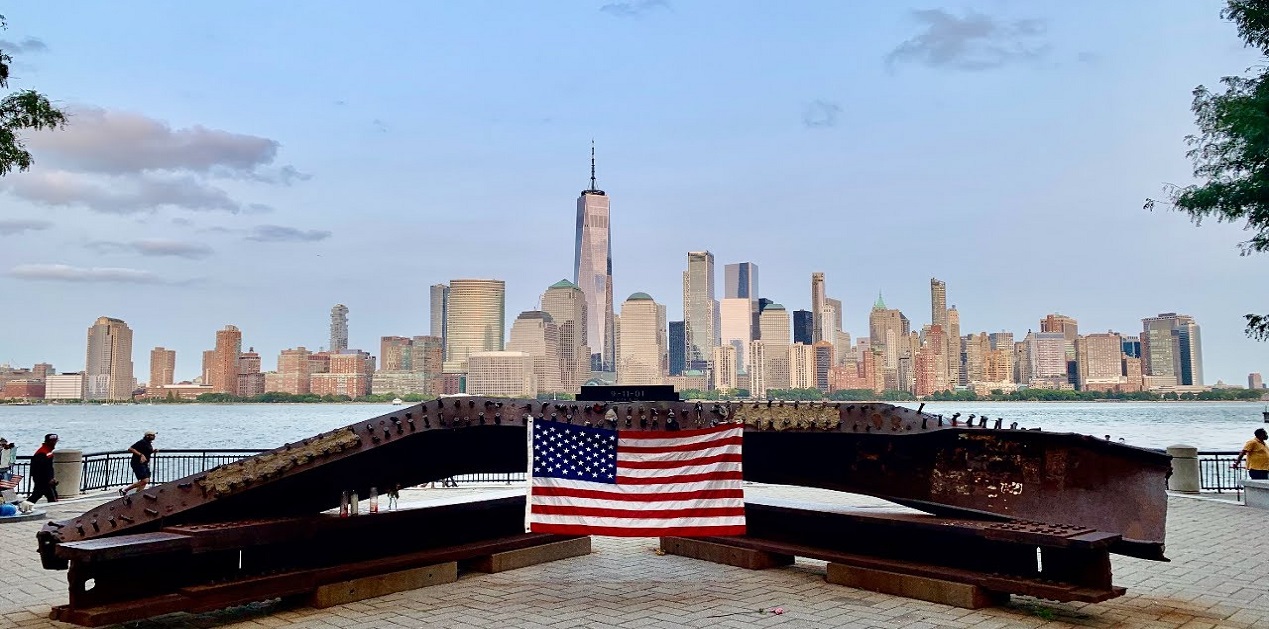



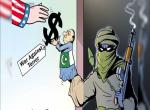
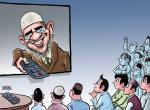


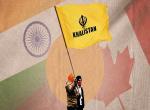
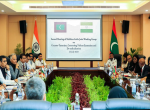
Post new comment